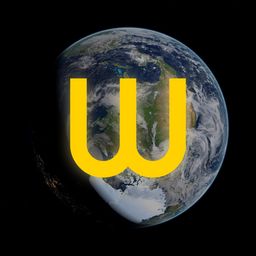Malaysia’s RON95 Subsidy Reform Raises Questions Over Fiscal Impact and Equity
Malaysia’s new RON95 subsidy reform, effective 30 Sept 2025, may deliver negligible savings. Analysts warn that generous quotas, a pump price cut, and poor targeting could make the policy more cosmetic than real fiscal reform

On 30 September 2025, Malaysia rolled out its much-anticipated reform of the RON95 fuel subsidy. Announced as a move towards better fiscal discipline and fairer allocation, the policy has quickly come under scrutiny from analysts and commentators who argue the changes may be more cosmetic than substantive.
According to a breakdown by economic commentator Eric See-To, popularly known online as Lim Sian See, the reform’s fiscal impact could be negligible or even negative, raising questions about its long-term sustainability.
The Core Adjustments
The new policy makes three central changes. First, foreigners are no longer eligible to purchase RON95 fuel in Malaysia. Second, a monthly quota of 300 litres per vehicle has been introduced for Malaysian citizens. Third, the pump price of RON95 was revised downwards, from RM2.05 per litre to RM1.99.
At face value, these measures appear to tighten subsidy access while providing relief to citizens. However, critics point out that the design of the scheme undermines its stated objective of saving public funds.
Savings That May Not Materialise
Lim estimates that restricting foreigners could save between one and 1.5 billion litres of fuel annually, equivalent to around RM700 million. While this appears significant, it is relatively modest compared to Malaysia’s overall subsidy expenditure.
The 300-litre quota, meanwhile, is described as “very generous,” with the majority of Malaysian households unlikely to reach the limit. Consequently, actual savings from the cap are projected at only RM1–2 billion annually.
Offsetting these potential gains is the pump price adjustment. Reducing the retail price from RM2.05 to RM1.99 increases the government’s subsidy burden by an estimated RM1.2–1.5 billion a year. Taken together, the measures could result in net savings close to zero—or worse, additional costs if global oil prices climb.
Questions on Targeting and Equity
A central criticism of the reform is its lack of precise targeting. The country’s top 20% income group (T20) continues to benefit equally from the subsidies, while company-registered vehicles—often larger, higher-consumption cars—remain eligible. In practical terms, this means the wealthiest Malaysians, as well as commercial fleets, still enjoy subsidised fuel under the same generous quota system as lower-income households.
This lack of differentiation raises concerns that the reform does little to address structural inequities in subsidy allocation. Instead of channelling support towards the most vulnerable groups, the policy risks perpetuating existing imbalances.
Administrative Costs and Missed Opportunities
Another contentious point is the cost of implementing the subsidy framework through the PADU system, reportedly valued at RM85 million. Critics argue that the expenditure is disproportionate, given the limited fiscal returns. If the net savings amount to around RM1 billion—or potentially less—the exercise may not deliver sufficient value to justify its rollout.
From a policy perspective, the reform appears to fall short of the government’s stated ambition of meaningful fiscal reform. Instead, it represents a compromise that avoids unpopular fuel price hikes but does little to alleviate pressure on the federal budget.
The Bigger Picture
Malaysia has grappled with subsidy reform for decades, balancing the need to reduce fiscal strain with the political sensitivity of fuel prices. Subsidies remain one of the largest recurring expenditures, and while reforms are often announced, they are frequently softened or reversed in response to public backlash.
The current approach illustrates this ongoing dilemma. By prioritising short-term political acceptability, the government risks undermining the credibility of its fiscal discipline. Moreover, should global oil prices rise significantly, the cost burden of this reform could exceed the status quo, making matters worse.
Conclusion
The 2025 RON95 subsidy reform underscores the complexities of balancing fiscal prudence, social equity, and political realities. While restricting foreign access and introducing quotas were intended as cost-saving measures, the simultaneous price reduction and lack of targeted support have diluted their effectiveness.
As it stands, the reform may bring little relief to Malaysia’s fiscal position, leaving the broader challenge of meaningful subsidy restructuring unresolved.


